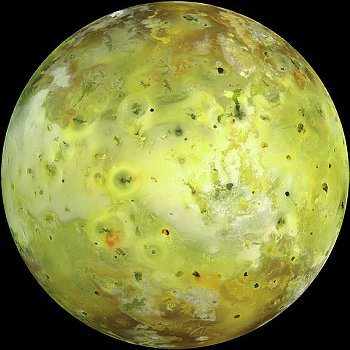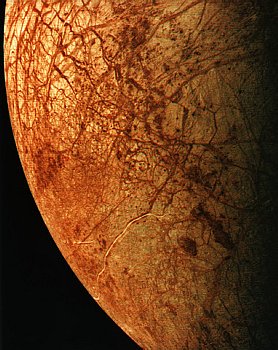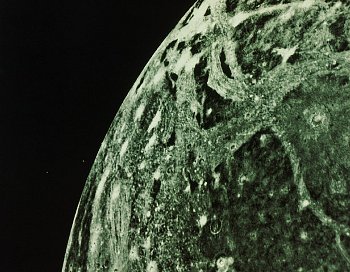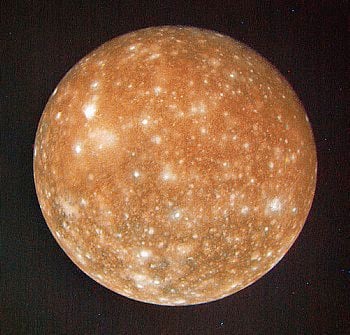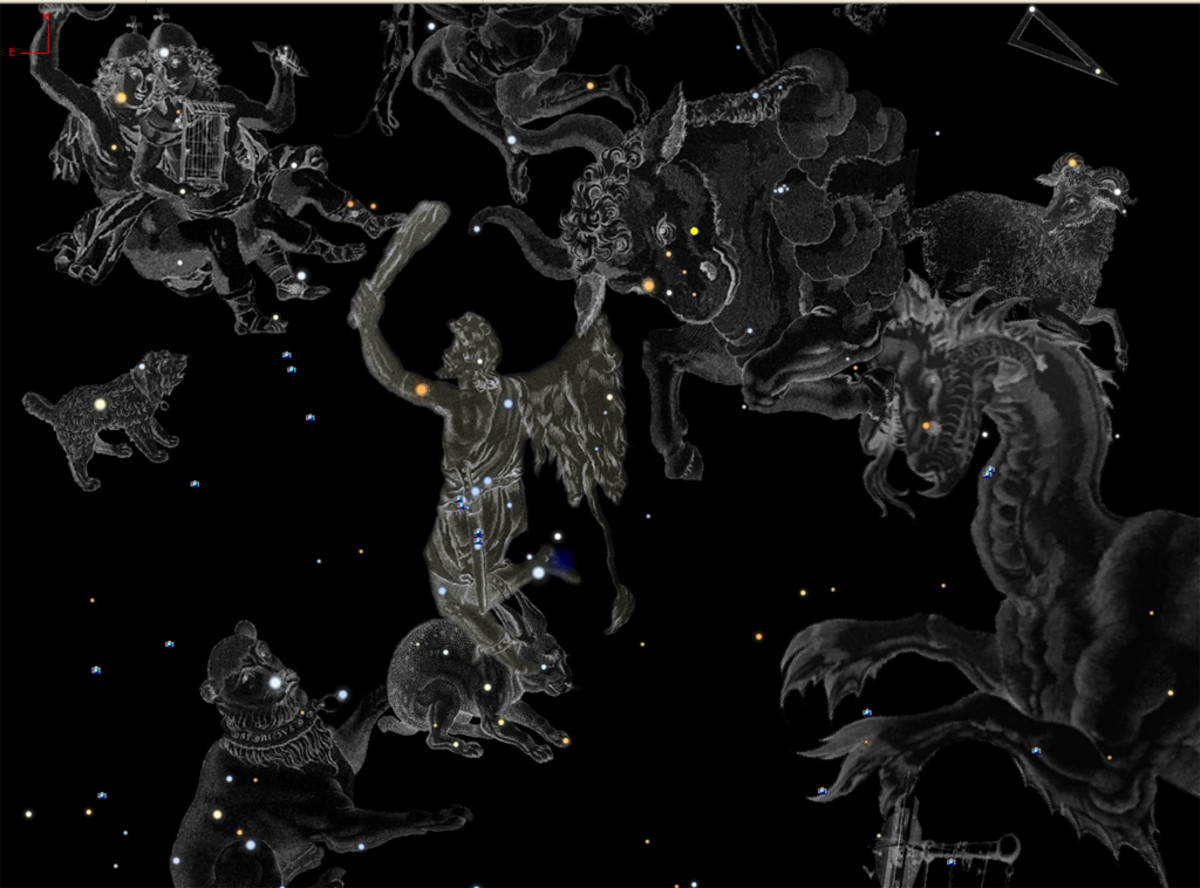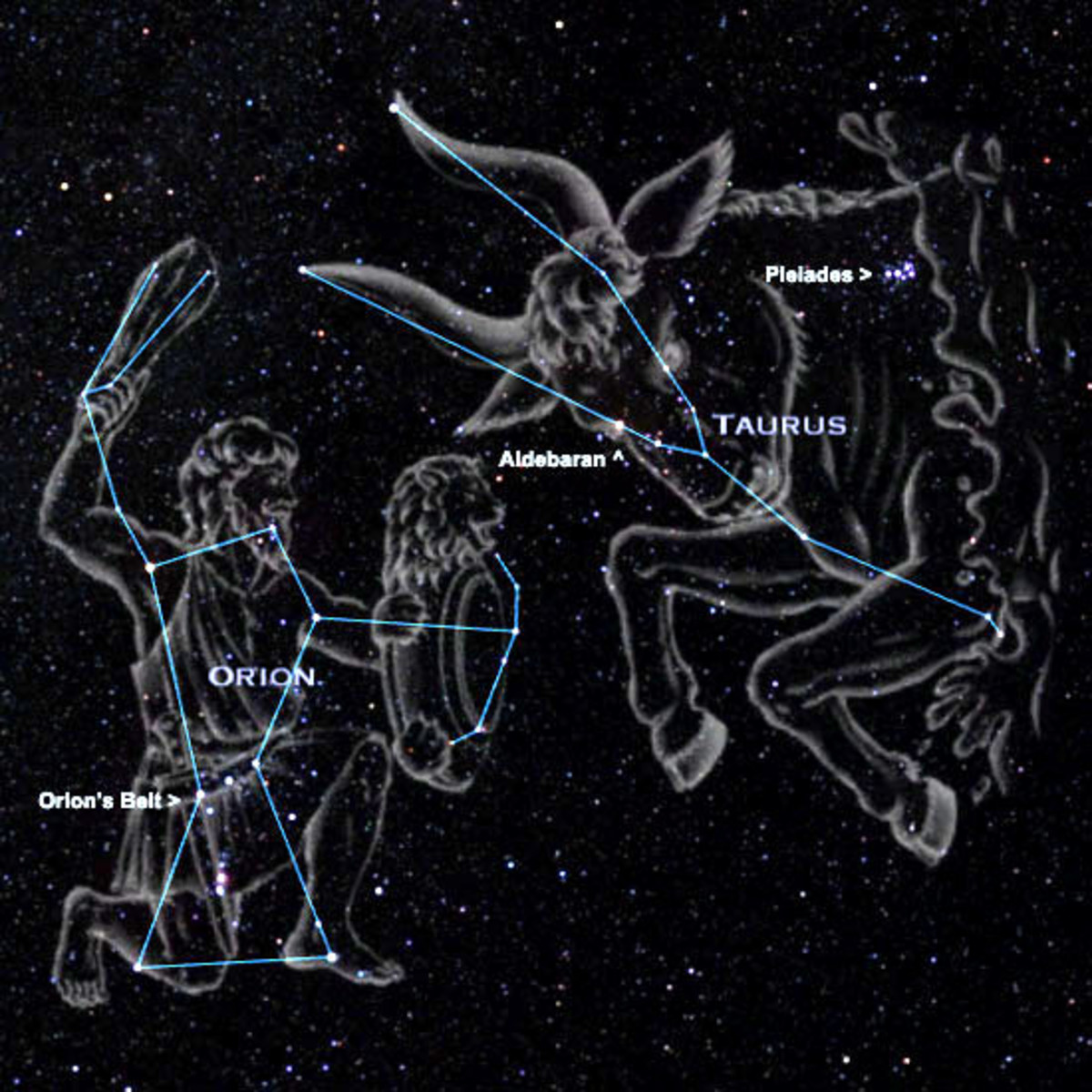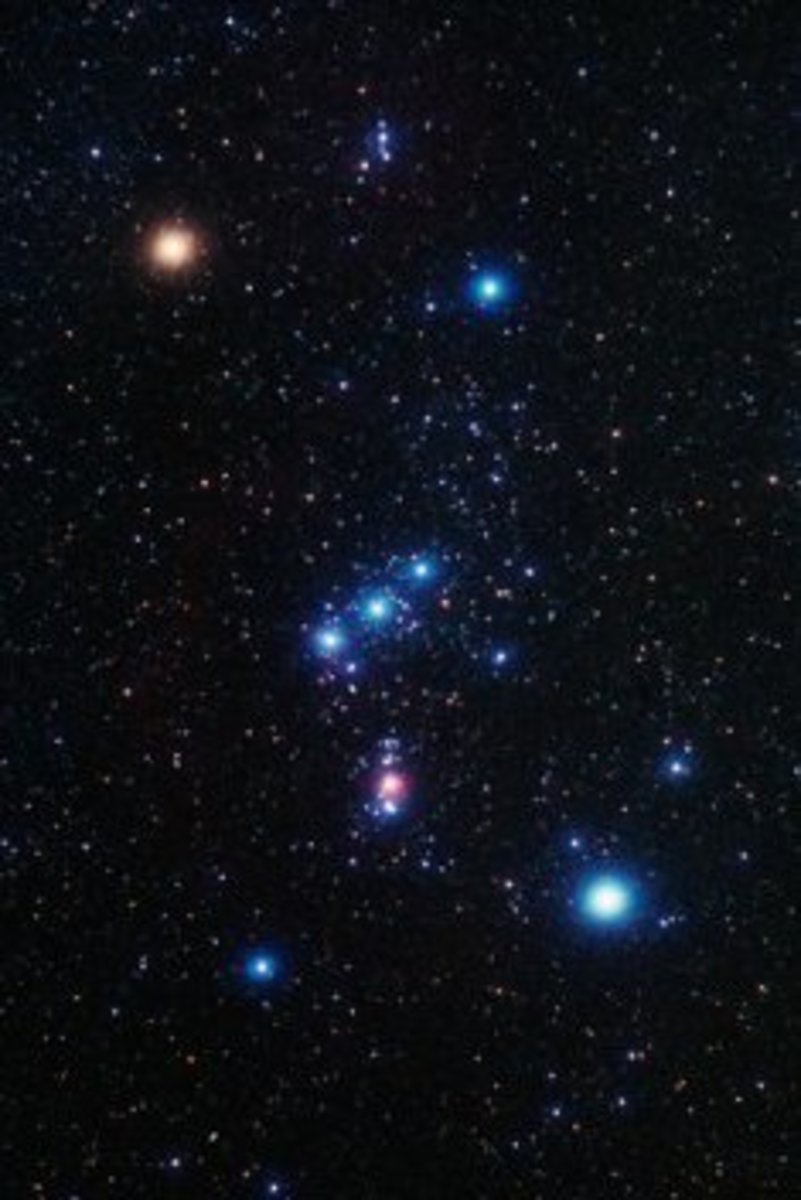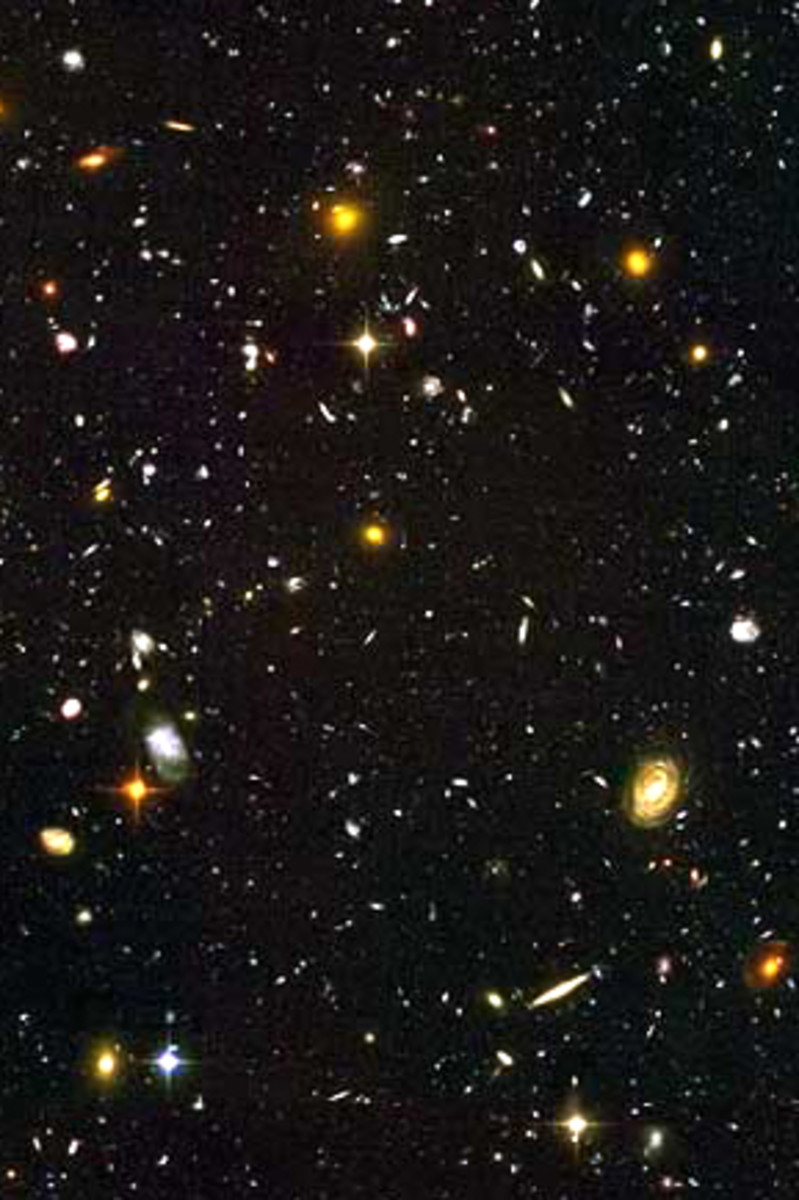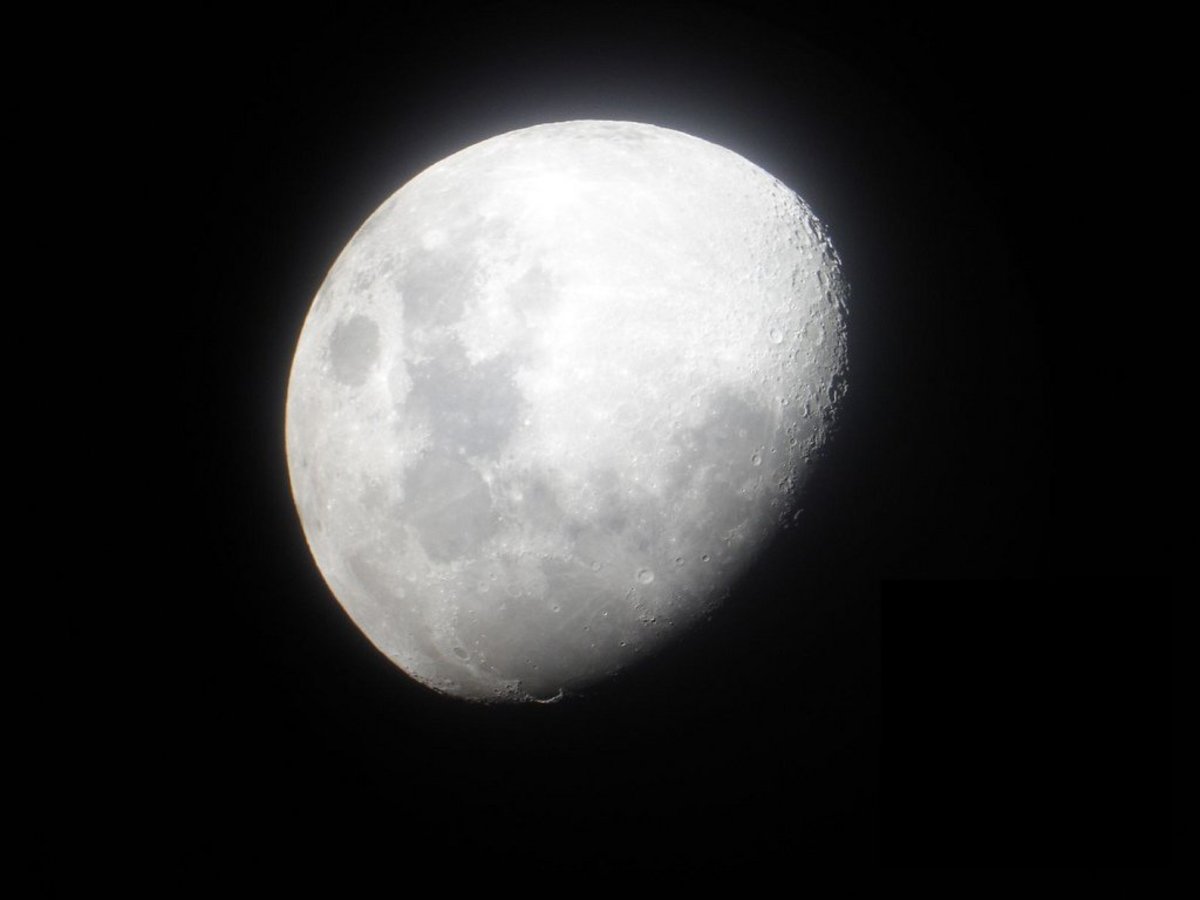Distances in the universe, magnitudes and constellations
Astronomy is one of the oldest sciences, which appears in the daybreak of humanity. It is a science on universe. Position of astronomical objects on the celestial sphere, study of celestial body motions as well as research of its structure are typical questions in astronomy.
Astronomy is perceived as attractive and interesting subject. Might is less obvious its importance in the orientation in the space and time measurement. Its practical importance additionally increase with turn to space exploration. With entering of science in the telescopic era, astronomy is developing into a modern science. Further contribution in that sense is provided by spacecraft outside the atmosphere (Hubble Space Telescope).
In the past astronomy was very close to mathematics while nowadays is usually connected with physics. It can be said that astrophysics represents modern astronomy since progress in researches is mostly achieved by physics methodology like spectrometry.
Traditionally, observational astronomy is divided to radio astronomy, infra-red astronomy, optical astronomy ultraviolet astronomy, x-ray astronomy, gamma-ray astronomy according to the techniques of research. More precisely, this division is determined by the part of light spectrum in which a body is observed. Special attention is given to our Solar System. There is also another branches of astronomy like theoretical astronomy, stellar astronomy and cosmology.
Amateur astronomy is of special interest since astronomy is one of rare sciences in which amateurs can give significant contribution.
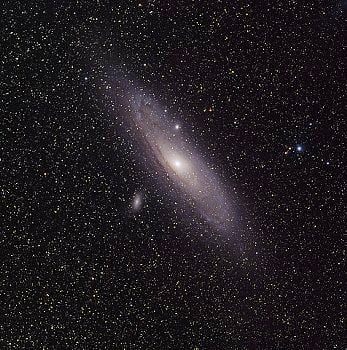
Distances in astronomy
Usually the value of a distance is expressed in metre according to the International System of Units. In everyday life simiral units like kilometre or centimetre are also used when it is more convenient. Typical distances in the universe are huge. For example, the distance between Earth and Sun is 149.6x106 km, the distance between Earth and second nearest star, Proxima Centauri is 4x1013 km. So, is quite impractical to express such distances in standard units. Istead, astronomy uses astronomical unit, light-year and parces as a distance unit.
The astonomical unit (symbol: a.u., au, ua, or AU) is the distance between the Sun and the Earth. This unit is originally defined as the lenght of major semi-axis of the Earth elliptical orbit.
The light-year (symbol: ly) is the distance that light travel in one year.
The parsec (symbol: pc) is the distance from which a lenght of 1 astonomical unit placed veritcally would be seen at an angle of one arcsecond. The name parsec is abbreviation of "parallax of one second".
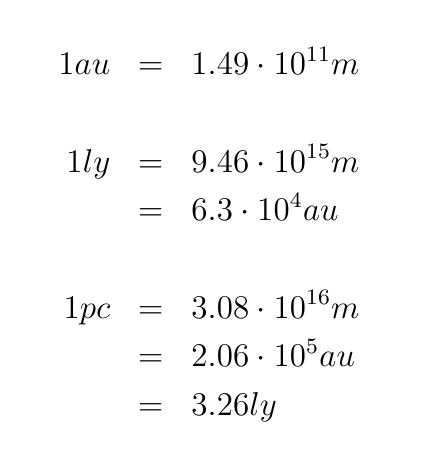
The universe is huge...
-
Moon is around 1 light-second far away from the Earth.
- Earth is 8 light-minutes far away from the Sun.
- Sun's nearest star Proxima Centaury is 4.3 light-years far away.
- Large Magellanic Cloud, our neighbouring galaxy, is 160000 light-years away.
- Andromeda galaxy, the closest spiral galaxy to our galaxy, is 2.5 million light-years away.
In order to gain some impression on distances in the universe, let mention some examples. It is easy to calculate (dividing a distance by the speed of light) that light needs little more than a second to travel the way from the Moon to the Earth. From the Sun to the Earth light needs around 8 minutes. The closest star Proxima Centauri is 4.3 ly far away from the Earth.
Our neighbouring galaxies the Large and Small Magellanic Clouds, which orbiting the Milky Way. They are 160000 ly and 180000 ly away of our galaxy, recpectively.
Note that when we are observing the universe, we see its past. Namely, when we observe on object somewhere in the universe, it's need time for light to bring the information towards the Earth. The longest the distance the oldest state of the object we see. For example, the galaxy Andromeda is 2.5 millions years far away of us, which means that the photo of Andromeda we see is the look of Andromeda as it was 2.5 million years ago.
Magnitudes
The Greek astronomer Hipparchus (c. 190 BC – c.120 BC) ranked stars into six magnitude classes according to their brightness. In the first class he put the brightest star like Sirius and Vega, in the second class little bit fainter stars and so on to the sixth class. Althought in that time magnitudes were literally related to the size of star, basically the system is kept up to date. Magnitude is one of the basic and the most interesting information of a star; togather with the distance and coulor (spectral type). While brightness of a star is an individual sense, magnitude can be precisely measured. We differentiate the apparent magnitude (m) and the absolute magnitude (M). The term magnitude usally reffers to the apparent magnitude.
The absolute magnitude is defined as an apparent magnitude an astronomical object would have if it were 10 parsecs away from the Earth. Clearly the apparent magnitude of a star depend on the absolute magnitude and the star distance from the Earth (r). This is expressed by the relation
M=m+5-5log(r) (1)
with the value of r in parsec. As an illustration, at the distance of 10 pc the magnitude of Sun would be around 5.
Stars which are seen by eyes dominantly radiate in the visual part of electromagnetic spectrum. However, there are stars which emits electromagnetic waves of some another part of spectrum, like infra-red or radio. If not specified otherwise, the value of magnitude refer to visual region of the spectrum.
The total energy of a star radiation is represented by the luminosity (L). Relationship between the total energy of radiation and magnitude is quite complex since the value of magnitude depend on detectors. The bolometric magnitude corresponds to the whole energy of radiation.
Table 1 shows apparent magnitude (m), absolute magnitude (M) and the distance (r) from the Earth for some stars and for globular cluster M13. Constellations are represented by abbreviation, UMi for Ursa Minor, Lyr fr Lyra, CMa Canis Major, UMa for Ursa Major Her for Hercules and Vir for Virgo.
Star/cluster
| Constellation
| m
| M
| r / ly
|
|---|---|---|---|---|
Polaris
| UMi
| 2.0
| -4.5
| 680
|
Vega
| Lyr
| 0
| 0.5
| 26
|
Sirius
| CMa
| -1.4
| 1.5
| 87
|
Alkor
| UMa
| 4.0
| 1.8
| 88
|
M13
| Her
| 6
| -8.98
| 20400
|
Gamma Vir
| Vir
| 2.8
| 2.8
| 32
|
Table 1. Magnitudes and distances of some of the brightest stars.
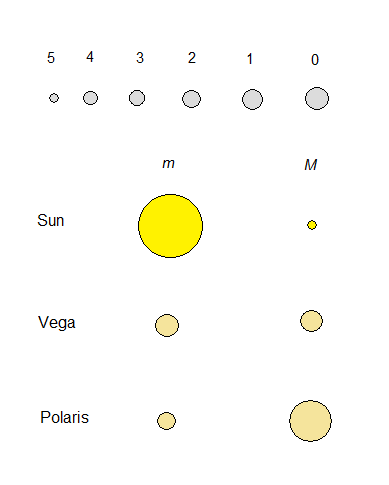
Orion's red supergiant star. One of the largest and most luminous star known compared by the Solar System.
Constellations
In each hemisphere during the night one can see several thousands of stars. Since ancient times people have recognized interesting shapes on the night sky, usually animals and mythical creatures. Such groups of stars (i.e. projection of stars on the celestial sphere) is called constellations. Celestial sphere is divided into 88 constellations, in order to provide navigation and classification of stars as well as the other astronomical objects. Some of constellations are Great Bear (Ursa Major), Cassiopeia, Lyra, Orion,...
Which constellation is possible to see from a certain location depend on Earth's position on the orbit around the Sun. Stars around the north as well as south celestial pole are always visible on the night sky. The others are visible only in a certain season, as a result of Earth movements. Thus, every season has characteristic appearance of the night sky.
While only the brightest stars have proper name, every star is numerates usually by a letter of the Greek alphabet and abbreviation of its constellation. Typically, brightness of a stars in comparison with others of the same constellation corresponds to the position of related letter in the alphabet. So, Polaris as the brightest star in Ursa Minor constellation is α UMi, the next one is Kochab as β Umi etc.
Constellation
| Proper name
| Abbreviation
| Apparent magnitude
| Distance (ly)
|
|---|---|---|---|---|
Ursa Minor
| Polaris
| α UMi
| 2.02
| 433
|
Kochab
| β UMi
| 2.07
| 126
| |
Pherkad
| γ UMi
| 3.00
| 480
| |
Yildun
| δ UMi
| 4.85
| 185
| |
Cassiopeia
| Shedir
| α Cas
| 2.2
| 228
|
Caph
| β Cas
| 2.25
| 54
| |
Tsih
| γ Cas
| 2.15
| 613
|
Table 2. Some of the brightest stars in the constellations Ursa Minor and Cassiopeia.
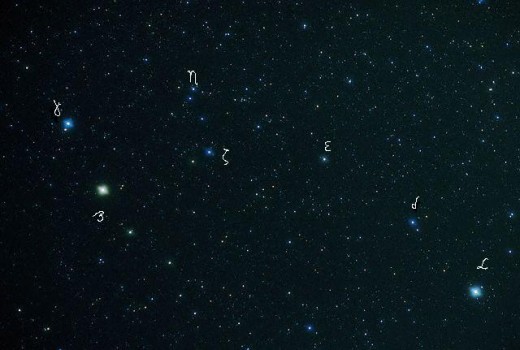
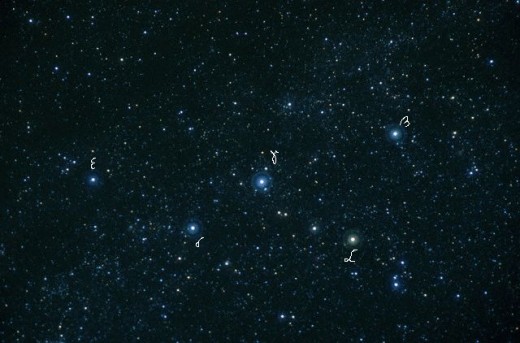
Besides the Moon, among the brightest objects in the night sky are the planets. The planets have no their own luminosity but reflect Sun's light. The word 'planet' comes from the Greek, meaning 'wanderer'. Namely, Greek astronomers noticed that some objects change they position on the night sky while (planets) the others are stable (stars). However, stars also change they position but during the longer time period, and that is the reason why Greek astronomers thought that stars don't move.
By the naked eye it is possible to observe planets Mercury, Venus, Mars, Jupiter and Saturn.
Watching the stars and constellation is very popular. However, it is difficult in the big cities because of light pollution. This term refers to the fact that city's lights interfere with star lights which results with empty night sky. It is a good practice to record observation in a notebook, and the note may consists of watching time, short description and drawing. Objects that are considered may be the Moon, planets, constellations, stars, variable stars,... Before watching, one should take attention to the eye accommodation.
Galileo Galilei's observations
When Galilei heard that a lensmaker from Netherlands invent 'glasses that magnify', he started to make his own telescope. The first telescope has about 3x magnification, but soon Galilei made an improved version with 30x. His observations between 1609 and 1611 results with unbelievable discoveries for that time.
Check your knowledge!
view quiz statistics
- Galilei saw that the Moon is not a perfect sphere but has hills, valleys and other geographical forms. This finding was contrary to the idea that the celestial bodies are of perfectly spherical shape.
- Based on observations of sunspots he found that the Sun rotates around its own axis with a period of approximately 27 days.
- With his telescope, Galilei saw four satellites of Jupiter, called Galilean satellites in his honour. These satellites are Io, Europa, Ganymede and Callisto. This discovery has had the greatest impact since it was direct evidence against the theory that the Earth was the centre of universe and that other bodies orbiting the Earth.
- Galileo discovered that similarly to the Moon, Venus has phases. This phenomenon indicates that Venus orbits the Sun.




Figure 7. Photos of Galilean moons: Io, Europa, Ganymede and Callisto. With his telescope, Galilei saw four satellites of Jupiter, called Galilean satellites in his honour.
Solar system
In the Solar System there are two types of planets, terrestrials and gas giants. Terrestrials are often understand as similar to the Earth while gas giants are similar to Jupiter. Terrestrials are Mercury, Venus, Earth and Mars while gas giants are Jupiter, Saturn, Uranus and Neptune.
Mercury is the planet closest to the Sun, without atmosphere. Temperature on the surface oscillate between 100 K and 700 K. The orbital period is 88 days while period of rotation a little above 58 day. As a consequence solar day on Mars lasts for 176 days.
Venus is the closest and by dimensions the most similar planet to the Earth. The solar day on Venus lasts around 116 days which is half of its orbital period. Venus has very dense atmosphere, the densest among terrestrials, consisting mostly by carbon dioxide. The temperature on Venus is around 750 K. The orbiting of Venus is retrograde.
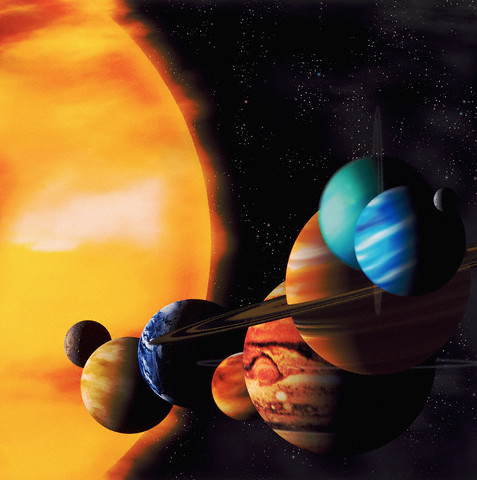
Mars is known as red planet. Its reddish appearance is caused by iron oxide on its surface. It has a thin atmosphere. The diameter of Mars as half as of Earth. One day on Mars lasts 24 hours and 37 minutes while its cycle around the Sun lasts 687 days. Mars has two moons, Phobos and Deimos. They are of irregular shape, with dimensions like 20 km. Its orbiting is synchronized which means they always facing the same side of Mars. The average temperature on the Mars surface is 250 K.
Terrestrial planets have only three satellites while gas giants are very rich in that sense. Particular interests is drawn by Galilean moons. These are Io, Europa, Ganymede and Callisto and they are discovered in 1610 by Galileo Galilei. Neptune has 13 known satellites, Uranus 27 while Jupiter and Saturn have more than 60 observed moons.
Video 2. Stunning pictures from the surface of Titan, with comments.
The spacecraft Cassini was lunched from the Earth in 1997 towards Saturn. The part of the spacecraft is the probe Huygens, that separated from the Cassini and landed to Saturn's moon Titan. The journey to Saturn has taken 7 years.
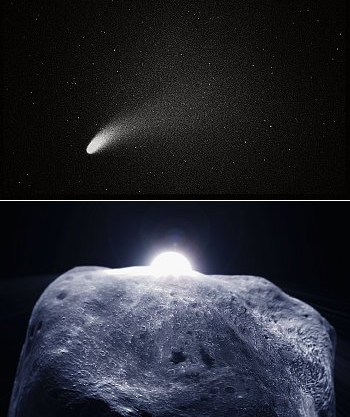
Small Solar System bodies
The term small body of the Solar System refer to objects in the Solar System which counted neither to planets nor dwarf planets. In this group of celestial bodies in the Solar System belongs bodies as meteoroids, comets, meteors and planetoids.
Meteors are astronomical bodies that burn in the atmosphere. Thus, the term meteor refers to both the object and phenomenon. A fireball is much brighter than a meteor and as such is one of the most attractive appearance on the night sky.
Unlike meteors, meteoroids fall to the Earth. A meteoroid looks like a smaller or larger stone. They originate from the time of Solar System formation.
Comets are complex bodies, composed of a core, hair and tail. The best known of the short-period comets (those with orbital period less than 200 years) is the Halley's Comet with orbital period of 75.3 years.
Planetoids are bodies structurally similar to the planets but much smaller and without atmosphere. In general they have too small mass to be of spherical shape.
It can be said that planetoids are parental bodies of meteoroids and comets of meteors.
Planet
| Prediction
| Discovery
|
|---|---|---|
Uranus
| W.Herschel, 1781.
| |
Neptune
| J.C.Adams, 1841., U.Le Verrier, 1846.
| J.G.Galle, 1846.
|
Pluto
| P.Lowell, H.Pickering
| C.W. Tombaugh, 1930.
|
Table 3. Discoveries of the outer planets.
Planetoids
Planetoids (or asteroids) are solids in the Solar system irregular in shape. Often they look reminiscent of a potato while oval and spherical shape are also possible. Some of them have their own satellites.
Planetoids are mostly located between Mars and Jupiter (i.e. 2.2 to 3.5 au), but there are those outside this zone. Their orbits have higher eccentricity than planetary ones; it has been reported even 0.88 as an eccentricity. In general, the greater mass of a planetoid the greater eccentricity of its orbit. Their diameter is smaller than 1000 km (for comparison, Earth radius is 6370 km). About 15 planetoids have a diameter grater than 250km, thus they are among the largest planetoids.
The main differences compared to the planets are: planetoids don't have atmosphere, they are completely solid and in general their mass is to small to maintain the spherical shape.
On the first day of the 19th century Ceres was discovered, the biggest one among planetoids. Its diameter is 1025 km. Rotation period of Ceres is around 9 hours while for the cycle around the Sun it needs 4.6 years. Nowadays Ceres is counted as dwarf planet in the Solar System. Table 4 presents diameter, rotation period and period around the Sun for some other planetoids.
Discoveries of outer planets
Ancient civilization knew about planets Mercury, Venus, Earth, Mars, Jupiter and Saturn, while Uranus and Neptune are discovered latter. Interestingly, Uranus was also discovered in the telescopic era although it is possible to see it with the naked eye.
Actually, Uranus had been known as an object before it is recognized as a planet of the Solar System ( it was mistakenly regarded as a star). Even W. Herschel, who is credited with the discovery of Uranus was not quite sure whether it is a planet.
The other outer planets was discovered due to the forecast based on the Newton's mechanics. Neptune was firstly discovered planet after Uranus. Namely, it has proven that the motion of Uranus is not completely in line with the predictions. Some researches than began to criticize the theory. However, J. Adams starting with correctness of the Newton's theory assumed the existence of a distant planet whose gravity causes perturbation in Uranus orbit. Latter, when U. Le Verrier provide the same calculation and prediction, Berlin observatory astronomers discovered planet Neptune.
Pluto was discovered on the same way, i.e. based on analysis of the irregularities of Neptune motion. Table 3 shows resume of the discoveries of the outer planets.

